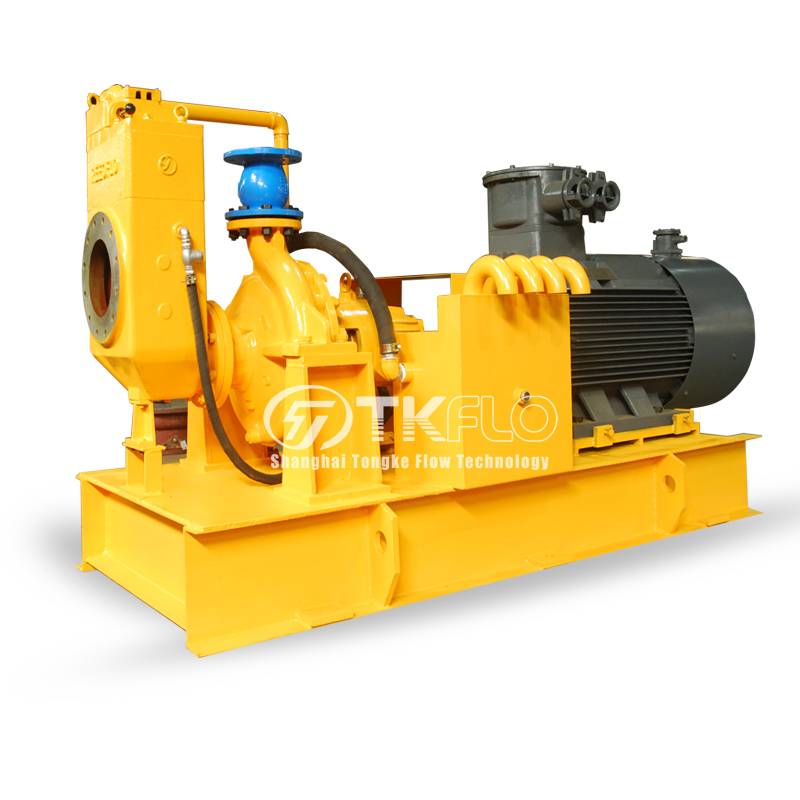How Does a Self-Priming Irrigation Pump Work?
A self-priming irrigation pump works by using a special design to create a vacuum that allows it to pull water into the pump and create the necessary pressure to push the water through the irrigation system. Here's a basic overview of how it works:
1. The pump has a chamber that is initially filled with water. When the pump is turned on, the impeller inside the pump begins to rotate.
2. As the impeller rotates, it creates a centrifugal force that pushes the water towards the outer edges of the pump chamber.

3. This movement of water creates a low-pressure area at the center of the chamber, which causes more water to be drawn into the pump from the water source.
4. As more water is drawn into the pump, it fills the chamber and creates the necessary pressure to push the water through the irrigation system.
5. Once the pump has successfully primed itself and established the necessary pressure, it can continue to operate and deliver water to the irrigation system without the need for manual priming.
The self-priming design of the pump allows it to automatically pull water from the source and create the pressure needed to deliver water to the irrigation system, making it a convenient and efficient option for irrigation applications.
What Is The Difference Between Self-Priming Pump And Non Self-Priming Pump?
The main difference between a self-priming pump and a non-self-priming pump lies in their ability to evacuate air from the suction pipe and create the necessary suction to start pumping water.
Self-Priming Pump:
- A self-priming pump has the ability to automatically evacuate air from the suction pipe and create a suction to draw water into the pump.
- It is designed with a special priming chamber or mechanism that allows it to prime itself without the need for manual intervention.
- Self-priming pumps are often used in applications where the pump may be located above the water source, or where there may be air pockets in the suction line.
Non-Self-Priming Pump:
- A non-self-priming pump requires manual priming to remove air from the suction pipe and create the necessary suction to start pumping water.
- It does not have the built-in capability to automatically prime itself and may require additional steps to remove air from the system before it can start pumping water.
- Non-self-priming pumps are commonly used in applications where the pump is installed below the water source and where there is a continuous flow of water to prevent air from entering the suction line.
The key difference between a self-priming pump and a non-self-priming pump is their ability to automatically remove air from the suction line and create the necessary suction to start pumping water. Self-priming pumps are designed to prime themselves, while non-self-priming pumps require manual priming.
Is a Self-Priming Pump Better?
Whether a self-priming pump is better than a non-self-priming pump depends on the specific application and the requirements of the user. Here are some factors to consider when evaluating the suitability of a self-priming pump:
1. Convenience: Self-priming pumps are generally more convenient to use as they can automatically remove air from the suction line and prime themselves. This can be advantageous in situations where manual priming is difficult or impractical.
2. Initial Priming: Self-priming pumps eliminate the need for manual priming, which can save time and effort during installation and maintenance. This can be particularly beneficial in remote or hard-to-reach locations.
3. Air Handling: Self-priming pumps are designed to handle air and water mixtures, making them suitable for applications where air may be present in the suction line.
4. Application Specifics: Non-self-priming pumps may be more suitable for continuous, high-flow applications where the pump is installed below the water source and air ingress is minimal.
5. Cost and Complexity: Self-priming pumps may be more complex and potentially more expensive than non-self-priming pumps, so the cost and complexity of the system should be considered.
The choice between a self-priming pump and a non-self-priming pump depends on the specific requirements of the irrigation system, the installation location, and the preferences of the user. Both types of pumps have their own advantages and limitations, and the decision should be based on the specific needs of the application.
Post time: Jul-08-2024
 seth@tkflow.com
seth@tkflow.com 
